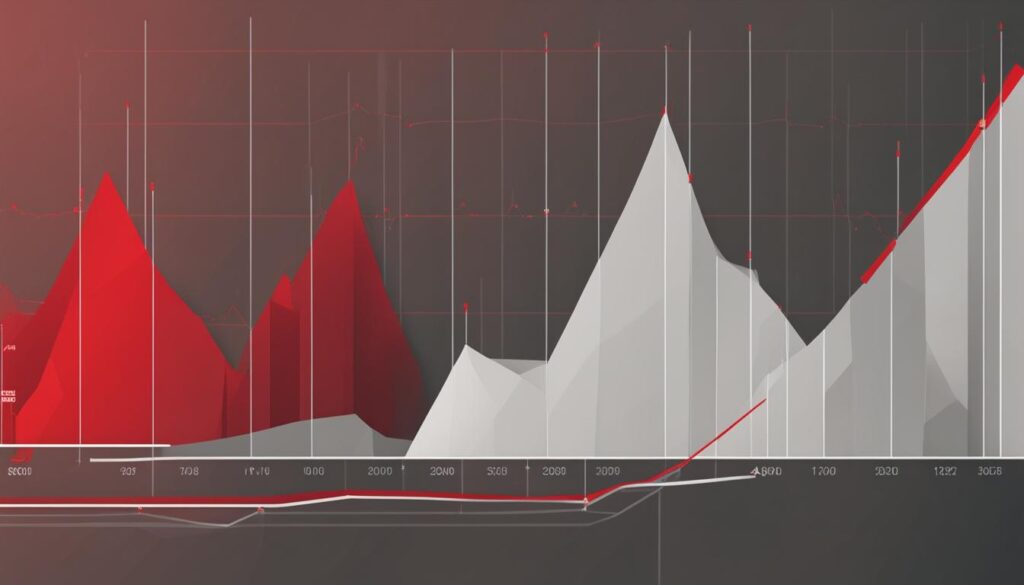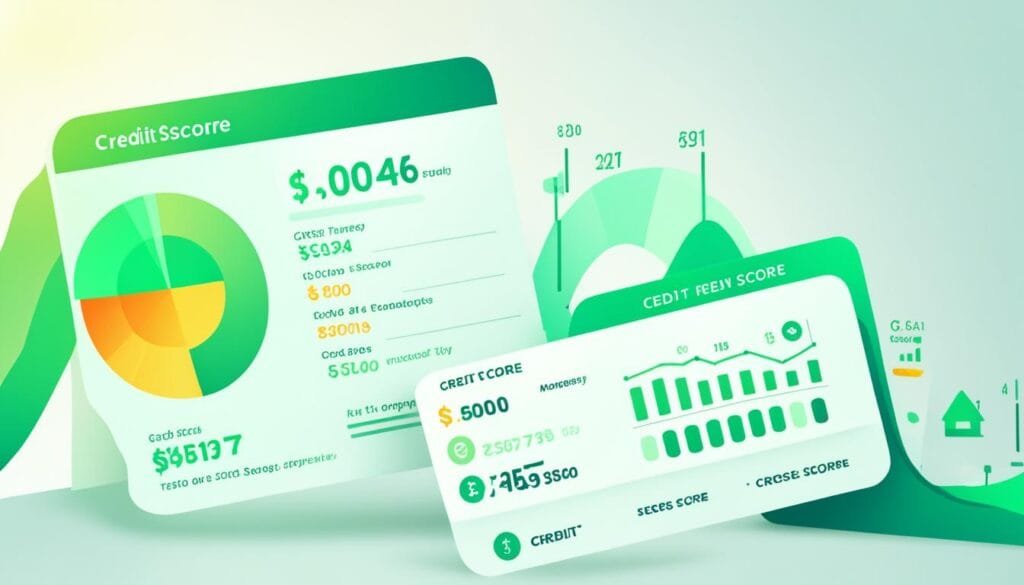Managing your debt effectively is crucial for maintaining financial stability and securing loans. One key metric that lenders use to assess your creditworthiness is the debt-to-income (DTI) ratio. This ratio measures the percentage of your gross monthly income that is allocated towards servicing your debt. Understanding how the DTI ratio is calculated and its significance in the lending criteria can greatly impact your borrowing potential and debt management strategies.
Calculating your DTI ratio involves dividing your total monthly debt payments by your gross monthly income. Lenders generally prefer a DTI ratio of no more than 36%, indicating that less than 36% of your income goes towards debt repayment. A lower DTI ratio signifies a better balance between your income and debt obligations, making you more attractive to lenders.
It’s important to note that the DTI ratio is just one factor that lenders consider when assessing your creditworthiness. They also take into account your credit history, credit score, and other factors. However, maintaining a low DTI ratio can significantly improve your chances of getting approved for loans and credit applications, demonstrating your ability to manage your debt responsibly.
Key Takeaways:
- The debt-to-income (DTI) ratio measures the percentage of your gross monthly income that goes towards debt repayment.
- Lenders prefer a DTI ratio of no more than 36%, indicating a balance between income and debt obligations.
- A low DTI ratio showcases your creditworthiness and ability to manage debt effectively.
- The DTI ratio is just one factor considered by lenders, alongside credit history and score.
- Maintaining a low DTI ratio increases your chances of loan approval and indicates financial stability.
Understanding the Debt-to-Income (DTI) Ratio
The debt-to-income ratio (DTI) is a crucial metric that reveals the balance between an individual’s debt and income. It serves as an indicator of a person’s borrowing risk and creditworthiness. By analyzing the DTI ratio, lenders can assess whether borrowers have manageable debt in relation to their income, ensuring they don’t become overextended with excessive debt payments.
When it comes to DTI ratios, lenders generally prefer to see lower values. An ideal DTI ratio is lower than 36%, with no more than 28% of the borrower’s income going towards servicing mortgage or rent payments.
For example, let’s consider the case of Rachel, who earns a monthly salary of $5,000. She has recurring monthly debt payments of $1,200, including a car loan, credit card bills, and student loan installments. By calculating her DTI ratio, we can determine if Rachel has a healthy balance between her debt obligations and income.
“Understanding the DTI ratio is essential for borrowers like Rachel. It helps determine the level of borrowing risk and whether their income is sufficient to manage their debt payments,” says financial expert, Jane Smith.
Calculating Rachel’s DTI Ratio:
Rachel’s Monthly Debt Payments: $1,200
Rachel’s Monthly Income: $5,000
DTI Ratio = (Monthly Debt Payments / Monthly Income) x 100%
DTI Ratio = ($1,200 / $5,000) x 100% = 24%
Based on the calculation, Rachel’s DTI ratio is 24%, indicating that she has a manageable level of debt in proportion to her income. Lenders would consider her to be a low-risk borrower.
It’s important to note that the DTI ratio is just one factor lenders consider when evaluating loan applications. They also take into account other variables such as credit history and credit score.
DTI Formula and Calculation
The debt-to-income (DTI) ratio is a crucial metric used by lenders to evaluate borrowers’ financial health and ability to manage monthly debt payments. To determine your DTI ratio, you need to calculate it using a simple formula:
DTI Ratio = (Monthly Debt Payments / Gross Monthly Income) x 100
To begin, gather information about your monthly debt payments and gross monthly income. Monthly debt payments include any financial obligations such as credit card bills, student loans, car loans, and personal loans. Gross monthly income refers to your total income before any taxes or deductions are applied.
Once you have these figures, follow these steps:
- Sum up all your monthly debt payments.
- Divide your total monthly debt payments by your gross monthly income.
- Multiply the resulting fraction by 100 to convert it into a percentage.
The final percentage represents your DTI ratio. It provides lenders with insight into your financial situation, indicating whether you have a manageable level of debt relative to your income.
Example:
Let’s consider an example to illustrate the DTI formula and calculation. Jane has the following financial profile:
- Monthly debt payments: $1,500
- Gross monthly income: $5,000
To calculate Jane’s DTI ratio:
- Divide her monthly debt payments ($1,500) by her gross monthly income ($5,000): 1,500 ÷ 5,000 = 0.3
- Multiply the resulting fraction by 100 to convert it into a percentage: 0.3 x 100 = 30%
Therefore, Jane’s DTI ratio is 30%, indicating that 30% of her gross income goes towards debt payments.
The lower the DTI ratio, the more financially stable and less risky borrowers appear to lenders. It’s essential to keep your DTI ratio within an acceptable range to increase your chances of loan approval and demonstrate your ability to manage monthly debt obligations.
Debt-to-Income Ratio Limitations
While the DTI ratio is an important factor in making a credit decision, it is not the only metric considered by lenders. Lenders also take into account an individual’s credit history and credit score. The DTI ratio does not differentiate between different types of debt and the associated cost of servicing that debt. For example, credit cards typically carry higher interest rates than student loans, but they are treated the same in the DTI ratio calculation.
“Lenders want to see a good credit history and an acceptable credit score, in addition to a favorable DTI ratio.”
This lack of distinction in the DTI ratio calculation can result in an incomplete representation of an individual’s overall creditworthiness. Additionally, if someone transfers their balances from high-interest credit cards to a low-interest credit card, their monthly payments would decrease, resulting in a lower DTI ratio. However, their debt burden remains the same.
It is important to note that credit history and credit score provide insight into an individual’s ability to manage different types of debt and their overall creditworthiness. Credit history reflects an individual’s past borrowing and repayment behavior, while credit score is a numerical representation of their creditworthiness based on various factors.
To compensate for these limitations and gain a more thorough understanding of a borrower’s financial situation, lenders may also consider other factors such as credit utilization. Credit utilization is the percentage of available credit a borrower is currently using. It provides insight into how responsibly individuals manage their revolving credit accounts, such as credit cards.
| Credit History | Credit Score | Different Types of Debt | Credit Utilization |
|---|---|---|---|
| Reflects borrowing and repayment behavior | Numerical representation of creditworthiness | No distinction in DTI ratio calculation | Insight into responsible credit management |
By considering credit history, credit score, different types of debt, and credit utilization in addition to the DTI ratio, lenders can make a more informed credit decision and assess a borrower’s overall financial health and creditworthiness.

How to Lower a Debt-to-Income Ratio
You can take steps to reduce your debt-to-income (DTI) ratio by focusing on two key areas: reducing your monthly debt and increasing your gross monthly income. By effectively managing these factors, you can improve your financial health and increase your chances of loan approval.
Reducing Monthly Debt
One way to lower your DTI ratio is by reducing your monthly recurring debt. Start by assessing your current debt obligations and identifying areas where you can make changes. Consider the following strategies:
- Pay off high-interest debt: Prioritize paying off debts with high interest rates, such as credit card balances. By eliminating these debts, you can reduce your monthly debt payments and improve your DTI ratio.
- Consolidate debt: Explore options for consolidating your debts into a single, lower-interest loan. This can simplify your repayment process and potentially lower your monthly payments.
- Reevaluate monthly expenses: Take a close look at your budget and identify areas where you can cut costs. By reducing discretionary spending, you can free up additional funds to put towards debt repayment.
By implementing these strategies, you can gradually reduce your monthly debt and improve your overall financial position.
Increasing Gross Monthly Income
Another way to lower your DTI ratio is by increasing your gross monthly income. Earning more money can help offset your existing debt obligations, allowing for a lower DTI ratio. Consider the following options:
- Seek a promotion or raise: If possible, work towards advancing in your career or negotiating a higher salary. Increasing your income can significantly impact your DTI ratio.
- Take on a side hustle: Explore opportunities to generate additional income outside of your primary job. This could include freelance work, part-time jobs, or starting a small business.
- Invest in education or skills: Consider investing in your professional development by pursuing further education or acquiring new skills. These investments can lead to higher-paying job opportunities.
By increasing your gross monthly income, you can not only lower your DTI ratio but also improve your overall financial stability.

Lowering your DTI ratio is an important step towards improving your financial health and increasing your chances of loan approval. By reducing your monthly debt and increasing your income, you can demonstrate to lenders that you have a lower borrowing risk and are better equipped to manage your financial obligations.
Real-World Examples of the DTI Ratio
To illustrate the calculation of the DTI ratio, let’s consider an example. John’s monthly bills include a mortgage payment of $1,000, a car loan payment of $500, and credit card payments of $500. His gross income is $6,000. By adding up his monthly debt payments ($1,000 + $500 + $500 = $2,000) and dividing it by his gross income ($2,000 ÷ $6,000), John’s DTI ratio is determined to be 33%. This shows that John’s debt-to-income ratio is 33%.
Understanding real-world examples of the DTI ratio helps borrowers assess their financial situation accurately. It provides insight into how the calculation works and the significance of debt payments in relation to income. By analyzing John’s situation, we can see how his mortgage, car loan, and credit card payments contribute to his overall DTI ratio.
| Debt Type | Monthly Payment |
|---|---|
| Mortgage | $1,000 |
| Car Loan | $500 |
| Credit Card Payments | $500 |
John’s gross income of $6,000 is used to calculate his DTI ratio. By adding up his monthly debt payments ($1,000 + $500 + $500 = $2,000) and dividing it by his gross income ($2,000 ÷ $6,000), his DTI ratio is determined to be 33%. This example highlights how the DTI ratio is influenced by various debt payments and income levels, providing borrowers with a concrete example to better understand their own financial situation.
Importance of Debt-to-Income Ratio for Lenders
Lenders rely on the debt-to-income (DTI) ratio to evaluate a borrower’s borrowing risk and determine loan approval. A borrower’s DTI ratio showcases the balance between their debt and income, providing insights into their ability to manage monthly debt payments effectively.
Banks and financial credit providers prefer to see low DTI ratios when considering loan applications. A low DTI ratio indicates that a borrower has a manageable level of debt in relation to their income, reducing the risk of default and improving the borrower’s chances of loan approval.
Conversely, a high DTI ratio signifies that a borrower may be overextended with debt, making it challenging to manage additional obligations or unexpected financial events. Higher DTI ratios are associated with higher borrowing risk, decreasing the likelihood of loan approval.
The DTI ratio is a crucial indicator of a borrower’s debt management capabilities. Lenders assess this ratio alongside other factors, such as credit history and credit scores, to make well-informed lending decisions.
How does Debt Consolidation Impact Your Debt-to-Income Ratio?
Debt consolidation loans simplification can greatly impact your debt-to-income ratio. By combining multiple debts into one loan, your monthly payments may decrease, resulting in a lower DTI ratio. This can make it easier to qualify for new loans or credit lines, as lenders often look at this ratio when assessing your financial situation.
Conclusion
Understanding your debt-to-income ratio is of utmost importance when it comes to qualifying for loans and maintaining your financial health. Lenders rely on the debt-to-income (DTI) ratio to evaluate your borrowing risk and determine if you can comfortably manage your monthly mortgage payments. To improve your chances of loan approval, it is advisable to aim for a low DTI ratio, ideally lower than 36%.
Managing your debt load and increasing your income are two effective strategies to lower your DTI ratio and boost your financial standing. By reducing your monthly debt obligations or finding ways to augment your earnings, you can achieve a more favorable DTI ratio. Keep in mind that a lower DTI ratio not only indicates improved financial health but also demonstrates your creditworthiness to potential lenders.
In summary, understanding and actively managing your debt-to-income ratio can greatly impact your loan qualifications and overall financial well-being. Maintaining a low DTI ratio improves your chances of loan approval and helps you sustain a healthy financial profile. Stay proactive in managing your debts and increasing your income to continue improving your DTI ratio and achieving a strong financial foundation.
FAQ
What is a debt-to-income ratio?
The debt-to-income ratio is the percentage of your gross monthly income that goes towards paying your monthly debt payments.
How do lenders use the debt-to-income ratio?
Lenders use the debt-to-income ratio to assess a borrower’s borrowing risk and determine the likelihood of managing monthly debt payments.
What is considered a low debt-to-income ratio?
Lenders generally prefer debt-to-income ratios of no more than 36%.
How is the debt-to-income ratio calculated?
The debt-to-income ratio is calculated by dividing your monthly debt payments by your gross monthly income.
Does the debt-to-income ratio consider credit history or credit score?
The debt-to-income ratio does not directly consider an individual’s credit history or credit score.
How can I lower my debt-to-income ratio?
You can lower your debt-to-income ratio by reducing your monthly debt payments or increasing your gross monthly income.
Can you provide an example of calculating the debt-to-income ratio?
Sure! Let’s say John has monthly debt payments of $2,000 and a gross monthly income of $6,000. His debt-to-income ratio is 33%.
Why is the debt-to-income ratio important to lenders?
Lenders use the debt-to-income ratio to gauge a borrower’s borrowing risk and determine loan approval.
How does the debt-to-income ratio impact loan qualifications and financial health?
A low debt-to-income ratio increases the likelihood of loan approval and indicates better financial health and creditworthiness.

